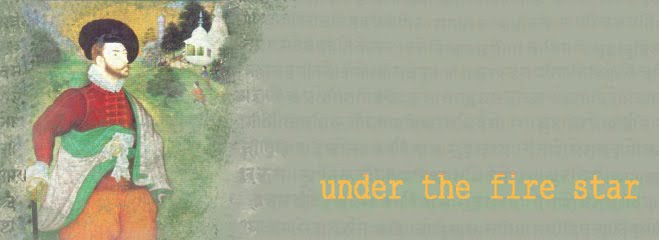Now that I have installed the extension forecastfox on my Firefox browser (why are only 22% of the people who read this blog using Firefox? Isn’t it time to leave Internet Explorer forever yet?), nice graphics of big round suns and the temperature rise up on my desktop from time to time, and then silently sink again. Yesterday the temperature was in the nineties for the first time. Yes, the dreaded veyilkkalam – the season of blinding sunlight -- is really on its way.
According to Mircea Eliade, the earliest known form of decoration, the zigzag pattern rimming a Neolithic pot, represented a wave train in profile. On this coast, the undulating line of the waves, their interminable cycle of growth and collapse, ran through the art of the Indians as the essential shape of life itself. Waves chase each other around woven hats and baskets. Beautifully chiselled waves edge a goathorn ladle, a wooden feasting bowl, a maple-wood mortar. The swooping calligraphic brushstroke, as it defines the outlines of an extended composition, mimics the curve of the wave, from trough to crest and down to trough again.
Waves have always been emblems, full of sombre meaning. "I hear the waves!" cries out the six-year-old Paul Dombey in his delirium, a few moments before his death. Philip Larkin, at the seaside, meditates on "the small hushed waves' repeated fresh collapse", conjuring a multitude of small hushed lives going to their deaths. Shakespeare, in Sonnet 60, sees in the waves the futile brevity of life:
Like as the waves make to the pebbled shore,
So do our minutes hasten to their end,
Each changing place with that which goes before,
In sequent toil all forward do contend...
The wave's urgent and dramatic expenditure of energy to no significant effect makes it a natural symbol of human self-importance and mortality. ...








